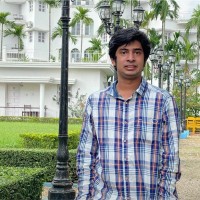< Back to All Events
|
A talk on Tackling a grand challenge in steel industry: hydrogen embrittlement
 Speaker Name
Speaker Name
Dr. Gaurav Kumar

May 2, 2025

03:00 PM

KCB 222
|SPEAKER BIO
Dr. Gaurav Kumar is a Postdoctoral Research Fellow in the School of Materials Science and Engineering at the Nanyang Technological University Singapore (NTU Singapore). He is working in the group of Prof. Yi-Sheng (Eason) Chen. His research focuses on the understanding and mitigation of hydrogen embrittlement in pipeline, stainless and bainitic steels via analytical modelling and advance characterisation techniques including FIB, TEM and Atom Probe Tomography (3DAP).
Prior to joining NTU Singapore, Dr. Kumar completed his PhD from the Indian Institute of Technology Bombay where he was a Prime Ministers Research Fellow (PMRF). His PhD research focused on developing the understanding of carbon partitioning in Directly Quenched and Partitioned (DQP) steels and how the strain induced transformation of filmy and blocky retained austenite affects the mechanical properties of DQP steels, especially its fatigue and fracture properties. He did his PhD in collaboration with the University of Oulu, Finland. Dr. Kumar did his PhD directly after his Bachelors. He completed his Bachelor of Technology degree from the National Institute of Technology at Durgapur in 2019.
Dr. Kumar has visited various universities and laboratories across the world for his research, like University of Parma, Italy (2018), University of Oulu, Finland (2022), the National Institute of Materials Science (NIMS), Japan (2024) and University of Tokyo, Japan (2024).
|ABSTRACT
The steel industry, which is a cornerstone of modern infrastructure and manufacturing, confronts a formidable challenge which demands urgent attention: hydrogen embrittlement. The presence of hydrogen in metallic materials can cause catastrophic early fracture. The biggest challenge lies in observing the hydrogen and its associated influences in microstructure. To this end, our research group have developed the cryogenic atom probe tomography (cryo-APT), for hydrogen mapping and applied it in combination with a micromechanical approach to investigate hydrogen embrittlement in steels. Our efforts have led to new insights for deciphering hydrogen trapping and embrittling mechanisms in steels, facilitating the development of the steel microstructure that has a good resistance to hydrogen embrittlement. Hydrogen interaction with a crack tip in the presence of a deformation induced phase transformation is also an important issue to understand and tackle. For this, we have made an attempt to understand how the structurally critical mechanical aspects like fracture toughness and crack propagation rates in steels consisting of metastable phase gets affected by the presence of hydrogen.

